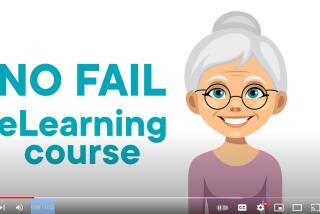Ticket Drives Woman to Get Speed Limit Changed
- Share via
VENTURA — More than 18 months ago a Ventura County sheriff’s deputy, using radar, pulled Judith Ann Goulet over for driving 52 m.p.h. on a Camarillo street with a speed limit of 35.
Confronted with the radar results, most drivers would have paid the $95 speeding ticket and put it behind them.
But Goulet, whose husband is the county road commissioner, fought the citation. She claimed that Camarillo--which is not under her husband’s jurisdiction--had set up an illegal speed trap.
Early this year, an appeals court agreed with her.
Goulet was driving too fast near a senior citizens complex and in an area where pedestrians and bicyclists are often present, the deputy testified. Nevertheless, the three-judge panel ruled that Camarillo’s own traffic studies showed that the speed limit on Ponderosa Drive should have been higher.
Under state law, police cannot use radar to enforce low speed limits if a traffic study shows that a higher speed is safe for most drivers.
If speeding is routine on a road where few accidents have occurred, a city usually has no choice but to increase the limit. Still, many officials are reluctant to do so.
“You keep on raising the speed limits until all the streets in the city are 55 m.p.h. I don’t think it’s proper,” said Simi Valley Councilman Bill Davis, whose city is in the midst of a speed limit review.
State lawmakers amended California’s speed limit law in 1972 to ban arbitrary radar enforcement. One goal was to keep towns from setting up speed traps--unexpected “slow zones” in which officers can write speeding tickets to boost local revenues.
“There are reasons for the speed trap law,” said Sam Haynes, a California Highway Patrol spokesman in Sacramento. “It’s not uncommon for localities to take advantage of people coming into the area and not being aware of the local situation or practices. They will get cited for speeding.”
The law also provided uniform statewide rules for setting speed limits on local streets.
Gary Foxen, a traffic engineer for the Automobile Club of Southern California, said many people do not understand the effect of speed limits.
“The public believes that if you post lower numbers on a speed limit sign, then everyone will abide by it,” Foxen said. “Conversely, if you post higher numbers, then everyone will drive faster.
“The reality is that people do not drive the roadway consistent with the speed limit. Most people are driving at a speed that they feel comfortable with, according to the conditions that exist.”
Under current law, the maximum speed on most major roads is 55 m.p.h., unless local officials set a lower limit. To enforce a lower speed limit with radar, the city must conduct a traffic study on that street every five years during off-peak hours.
Under rules by the California Department of Transportation, traffic engineers calculate the 85th-percentile speed, which means that 85% of the vehicles are moving at or below this speed. Generally, the road’s speed limit is set at the nearest 5 m.p.h. increment below that figure.
If a city does not follow these rules, its traffic tickets may not stand up in court, which is what happened after Goulet received her citation.
Goulet’s husband was familiar with that stretch of road, and he suspected that the ticket was not valid.
He discovered that in 1988, Camarillo had determined that 85% of vehicles on Ponderosa Drive were traveling at 48 m.p.h. or less--and that 95% of drivers were exceeding the 35-m.p.h. speed limit.
At his wife’s Municipal Court trial in 1991, Art Goulet and a county traffic engineer testified that because the traffic study did not justify the 35-m.p.h. speed limit, the citation was invalid.
Nonetheless, Judge Kenneth W. Riley found Judith Goulet guilty of speeding. She appealed the decision to Ventura County Superior Court and the appellate panel ruled in January that Goulet’s ticket must be dismissed.
“My wife didn’t fight this case to set a precedent,” Art Goulet said. “She felt, as I felt, that it was an unfair speed limit, and she was ‘trapped.’ ”
A new traffic survey has been conducted since Judith Goulet received her ticket--and the speed limit on Ponderosa Drive has been raised to 40 m.p.h.
More to Read
Sign up for Essential California
The most important California stories and recommendations in your inbox every morning.
You may occasionally receive promotional content from the Los Angeles Times.













